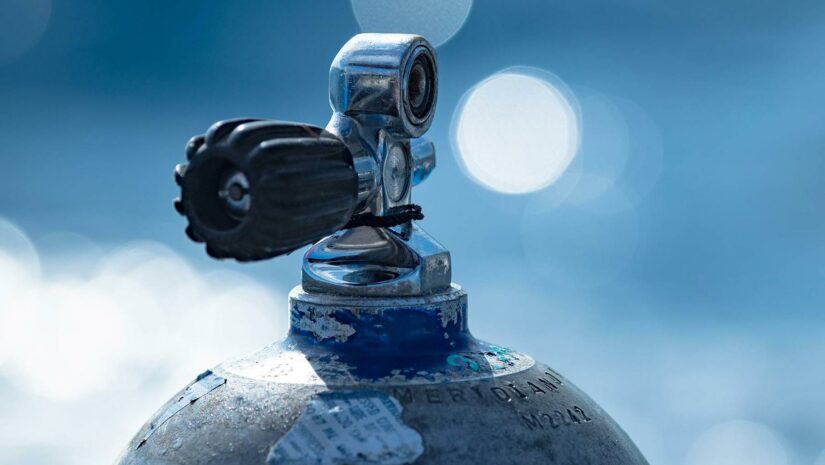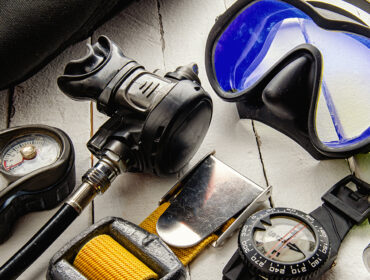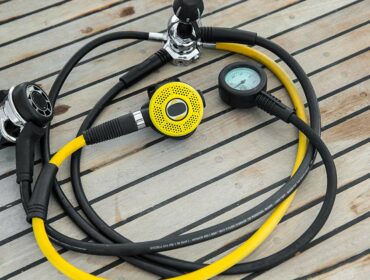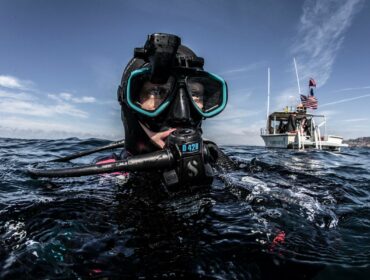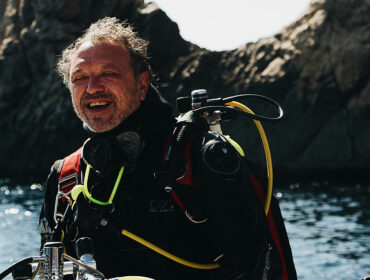DIN, International, K- Valve, A-Clamp, Yoke Connector, DIN 477… sound familiar? Well, you may have already come across these terms on your scuba diving trips. All of them refer to the type of method or valves used to connect your scuba air tank or diving cylinder to the first stage of your regulator/octopus.
If you remember, the “first stage regulator” helps reduce the pressure of the air coming from the tank (from high pressure to intermediate pressure) and relays the air to the connected “second stage regulator” for the last step of pressure reduction, making the air breathable.
While regulators may be more familiar, scuba valves also make up an integral part of every diver’s underwater breathing equipment as it opens and closes the tank. It’s also the part that connects to your regulator, so it’s crucial for every diver to be familiar with both.
Below, we’ll explain the main components, attachment methods, and the most common styles of scuba tank valves that are available on the market for today’s deep-sea divers.
What is a scuba tank valve?
All scuba tanks have to have a scuba tank valve, which attaches the first stage of our regulators to the tank. The scuba tank valve is what allows the air to flow from the tank, into the regulator, and finally into our mouth and lungs.
In the USA, a K-valve is most commonly used as a scuba tank valve, but other scuba tank valves might be found on tanks in other areas of the world. All scuba tank valves do the same job, though adaptors can be used to attach various types of regulators to the different valves.
Main Components of Scuba Tank Valves
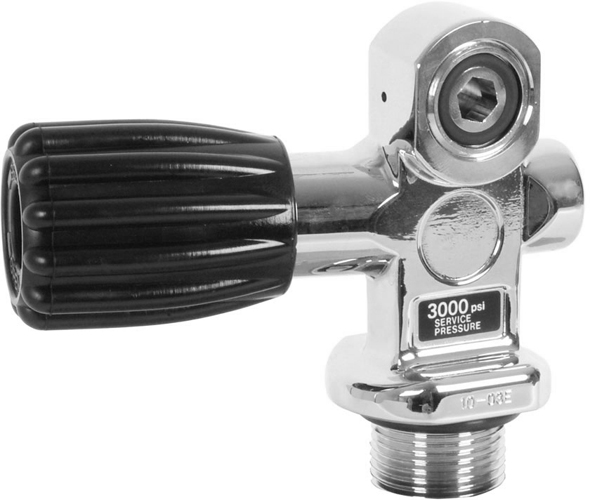
While there are several styles of scuba valves available, they essentially have the following components:
Knob
The knob is what opens and closes the valves, allowing you to control air flow. Turning the knob left (counterclockwise) would open the valve while turning it right (clockwise) would close it.
O-Ring
Scuba valves typically have an O-ring that helps create a secure seal between the valve and the regulator. However, it can sometimes be on the regulator itself, depending on the connection or attachment method used (more on this below).
Burst Disk
This thin copper disk is more of a safety feature which ruptures once the tank’s internal pressure reaches a certain level, thus helping divers avoid serious bodily injuries.
Snorkel
The valve snorkel is not what you wear but a tube that extends from the bottom of the valve and stops debris from flowing through it when the tank is inverted.
Yoke vs DIN Fittings

Before we talk about the kinds of valves that are available on the market, let us describe the two ways in which the valve attaches your regulator to the tank.
Yoke
Also referred to as the A-clamp or international fitting, the yoke was the standard connection for many tanks around the world. A yoke regulator connection features an oval metal brace that fits over the top of the tank valve. It also has a rotating black plastic handle which you use to tighten the regulator’s metal yoke screw onto the tank valve.
The O-ring, which sits visibly on the yoke valve itself rather than on the regulator, expands by air pressure as it tries to create a seal between the valve and regulator. As a result, the yoke valve O-ring will eventually wear out or get damaged, causing air leaks that can cause minor to major disruptions of air supply if it is not replaced.
Nonetheless, the yoke fitting is common around the world and is still the ideal (and most affordable) connection for tanks with average pressure ratings.
DIN
DIN (short for the Deutsches Institut Für Normung) is a German-standard setting that is rapidly increasing in popularity. It is more widely used outside the US and is indispensable for technical and deep divers for its ability to withstand higher maximum pressures of air (over 3000 psi).
What makes a DIN fitting different is that its “captured O-ring” seal is thicker, more dependable, and attaches to the regulator connector instead of the tank valve. At the same time, the regulator connector doesn’t have an oval metal brace (so it is less bulky and doesn’t need a clamp attachment) and you can screw it directly into the DIN compatible valve.
Common Scuba Tank Valve Types

Although valves are available in many different styles, it helps to be familiar with at least three of the most common: the K-valve, J-valve, and DIN valve.
K-Valve
You’ll find K-valves on most tanks—especially in the United States. They’re the simplest and use yoke attachments to help create secure connections with compatible regulators. To assemble, divers simply slip the yoke regulator attachment over the K-valve and tighten a screw against the rear of the valve.
J-Valve
Although somewhat similar to K-valves, J-valves are unique for their reserve mechanism. It features a spring that closes airflow when the tank pressure drops below around 500 psi. The reserve will open when you pull the rod that’s attached to the reserve lever.
J-valves are no longer recommended as they have been replaced with reliable tank pressure gauges. But when divers do use them, they make sure to disable the reserve mechanism (by turning the reserve lever downwards) before each dive to keep the valve from cutting off the air supply while there’s remaining air.
DIN Valve
DIN valves are for tanks with services pressures over 3000 psi. As you may have guessed, these specialized DIN valves use DIN attachments to connect to regulators. You can tell a DIN valve just by looking at it as its hole connection is wider and doesn’t have an O-ring on it. Divers simply screw the regulator’s DIN fitting into the DIN valve’s internal threads.
Scuba Valve and Regulator Converters
Although these are how manufacturers build scuba valves and recommend valve-regulator connections, there are many converters or adapters that enable both valves and regulators to be dual compatible. Some examples are the Aqua DIN to Yoke Regulator Converter and the DIN to Yoke Tank Filler Adapter.
Not only do these adapters eliminate the need to make a rush purchase for a brand new regulator when it’s not compatible with a tank that you’re renting, but it also saves you the time and money that you would otherwise spend on service repairs.
To better understand scuba valves and its connections, check out this in-depth video demonstration:

